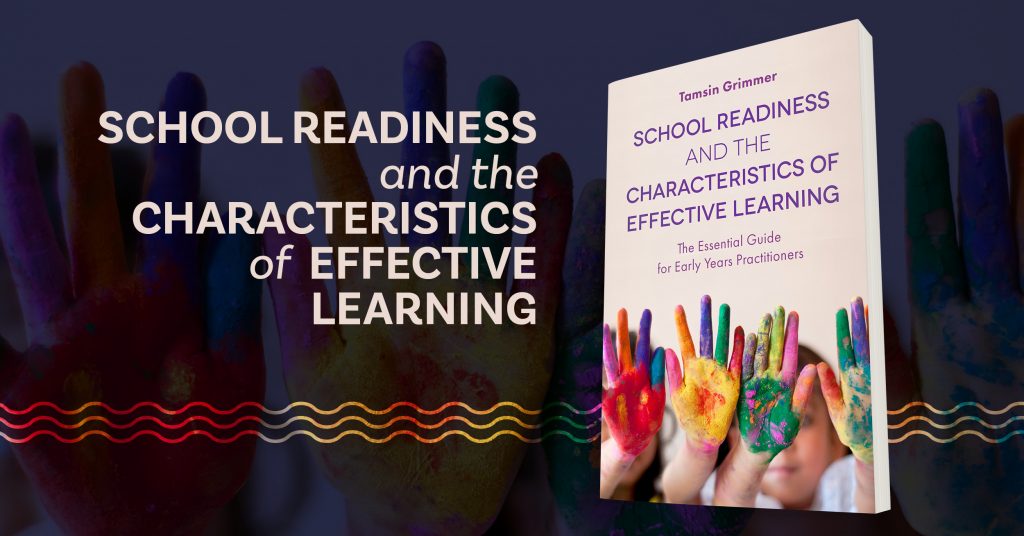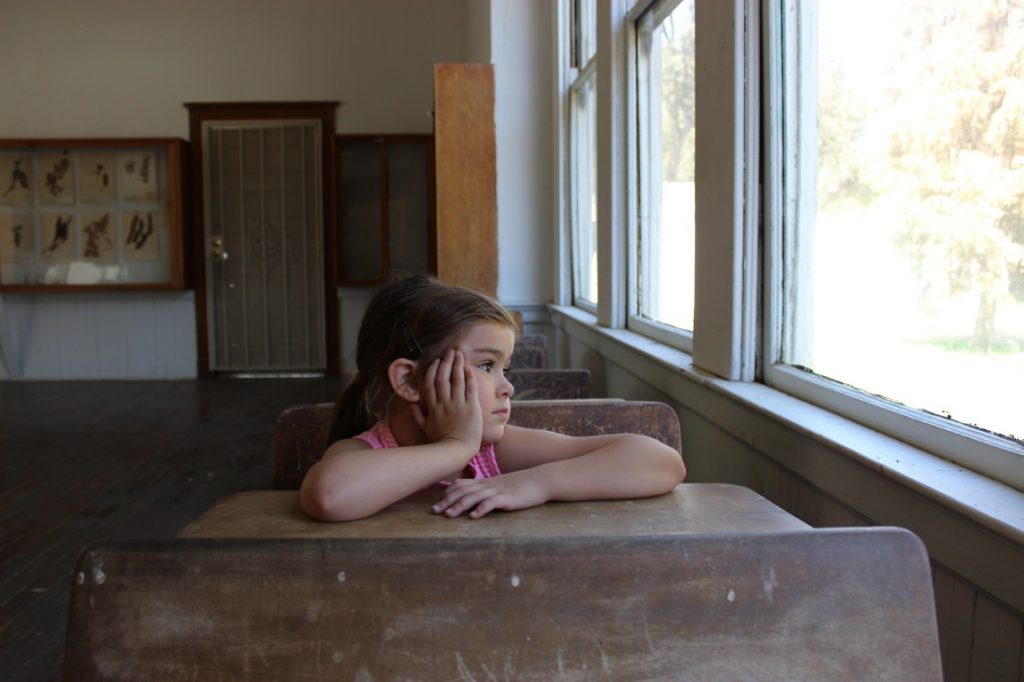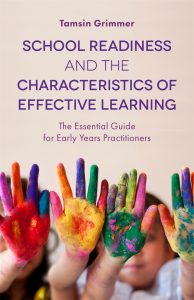 Tamsin Grimmer explores the concept of school readiness by unpicking what the term means for children in her new book School Readiness and the Characteristics of Effective Learning, here is a synopsis of what you can expect from the book taken from the introduction.
Tamsin Grimmer explores the concept of school readiness by unpicking what the term means for children in her new book School Readiness and the Characteristics of Effective Learning, here is a synopsis of what you can expect from the book taken from the introduction.
Children’s firsts are celebrated around the world. The first smile, the first wave, the first time they crawl, walk, or talk and one hugely celebrated milestone, the first time they go to school.
When we consider the phrase ‘school readiness’ and its use and misuse in policy and practice, we perhaps open up a can of worms. There are conflicting views over definitions and the term provokes strong feelings. It is my hope that my book will play its part in the debate and ensure that the views of practitioners, parents and most importantly children are taken into account. It will offer parents ideas of how to support children at home prior to starting school, as well as practitioners in settings and schools. It aims to keep children central to the discussion because they are, after all, the ones who will be starting school.
The transition into school for the first time requires children to cope with many changes. They will have hugely different expectations placed upon them, major changes in their daily routine and changes in their learning environment. This necessitates children to have within them the ability to cope with these challenges and display attributes such as self-confidence and resilience to name but two.

What’s in the book?
The first chapter explores the difficulties in defining school readiness and how a holistic approach may better suit the needs of our children. The second chapter examines the various issues that arise when discussing starting school, such as formal verses informal learning, school starting age and so on. The Early Years Foundation Stage (EYFS) sets ‘the standards for learning, development and care for children from birth to five’ in England. It talks about Characteristics of Effective Learning (CoEL) or in other words, the personality traits that make a child good at learning. I believe that if a child displays these characteristics they will be empowered to cope with all the demands that moving on to school will place upon them.
In Chapters 3, 4, 5, and 6 this book unpicks these characteristics in terms of what they look like for children through positive relationships and enabling environments. In order for children to be ready for school, they need to be curious about the world around them and have the motivation to engage with learning. It is the responsibility of the adult to ensure that they have provided enough to engage the children, but the children will also need to be ready to actively learn through play and exploration and be able to think critically and creatively about the things that they experience. These characteristics are, in my view, the key to a successful start to school and a good foundation to life-long learning.
Chapter 7 considers children who are ready for school and attempts to advocate for them in the absence of their voice in this debate. Chapter 8 provides ideas and case studies outlining how schools can ensure that they are ready for the children they receive each year and Chapter 9 considers how settings help to prepare children for school and how schools and settings can collaborate together for the benefit of the children. Chapter 10 focuses on engaging parents in the process of preparing their children for school and Chapter 11 sums up the issues discussed looking towards the future. I have also included a glossary which explains key words and phrases used throughout the book.
At the end of each chapter I have included some reflective practice questions to enable the reader to review and reflect upon the issues covered in that chapter. There are two self-evaluation tools, one aimed at Reception class practitioners and the other aimed at preschool and nursery practitioners. It is my hope that these will be useful aids for developing your practice, so to support further self-evaluation.
Throughout this book I use the term ‘practitioner’ to mean an adult who is working directly with the children and supporting their care, learning and development. This could be in a preschool, nursery, school or home setting. There are many different titles that such adults hold, such as early years educator, early years professional, early years teacher, childminder, playworker, teacher, nursery nurse, learning support assistant, teaching assistant, nanny and many more. I sometimes specifically refer to teachers and teaching assistants in a school setting to differentiate between adults working in a Reception class and those working with children prior to this. Throughout the book I use the term parent to include parent, carer and anyone with parental responsibility for the child.
This book discusses school readiness in relation to all children regardless of gender. Throughout the book I use the terms ‘child’ and ‘children’ unless referring to a specific case study or unless the gender of the child is relevant to the context. I have used the term ‘school readiness’ to refer to the stage when a young child first attends Infant or Primary school, usually entering a Reception class as opposed to a preschool or nursery setting, although as this chapter later discusses, this phrase is loaded with deep feeling and sometimes confusion. I believe school readiness to be a misleading term which could be rephrased somewhat, however it is my hope that this book will be a step towards defining what is meant for the sake of the children. Children must remain central to this concept at all times.
Use code TAM for a 10% early bird discount when you order this book from our website before the 18th March.
Read Tamsin’s blog for us describing the 12 common types of schematic behaviour in young children.
If you would like to read more articles like this and get the latest news and offers on our early years books, why not join our mailing list? We can send information by email or post as you prefer. You may also be interested in liking our Special Ed, PSHE and Early Years Resources Facebook page.
